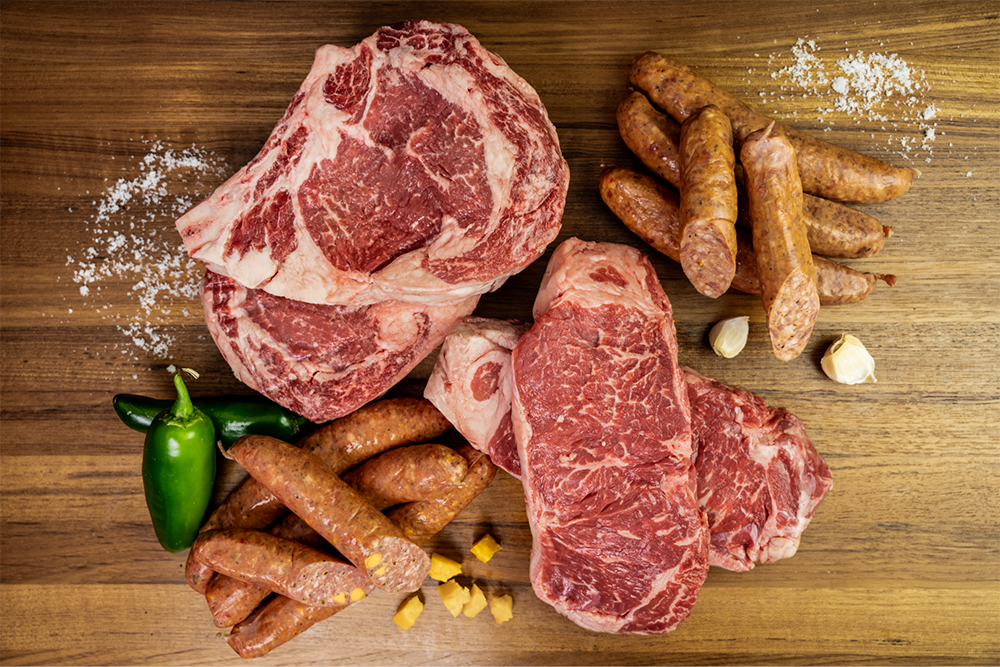Bagley Farms Meat Market Edwardsville IL: Your Relied On Source for High-Quality Meats
Discover the Art of the Butcher's Cut in a Modern Meat Market
In the ever-evolving landscape of contemporary meat markets, the butcher's cut has transcended its conventional roots, merging olden craftsmanship with modern methods. bagley farms meat market edwardsville il. Today's butchers are not just cpus of meat; they are experienced craftsmens who highlight sustainability and honest sourcing. Their expertise in selecting and preparing cuts customized to details cooking needs uses an unequaled dining experience. What really establishes the contemporary butcher apart is their capability to forge a much deeper connection in between consumers and the beginnings of their meat. How do these masters equilibrium custom with innovation, and what effects does this have for the future of meat consumption?
Development of Butchery Techniques

The mid-20th century saw butchery methods even more refined by clinical understandings into muscle mass biology and meat aging, enhancing both inflammation and preference. Developments like vacuum packaging and refrigeration expanded item shelf-life, allowing butchers to expand offerings and boost quality assurance. This period also marked the surge of specific equipment, such as band saws and meat slicers, which increased accuracy and effectiveness in meat processing.
Computerized systems now assist in tracking animal provenance and maximizing cuts to meet certain customer preferences. In addition, a revival in artisanal butchery has actually arised, blending standard abilities with modern understanding to provide to customers seeking honest and lasting meat alternatives.

Comprehending Meat Cuts

Recognizing the details of meat cuts is crucial for both butchers and customers looking for high quality and worth. Each cut comes from a different component of the pet, giving distinct flavors, appearances, and food preparation methods. Mastery of these differences not just improves cooking experiences yet likewise makes best use of the energy of each carcass. For butchers, accurate cuts reflect ability and respect for the craft, making certain marginal waste and optimal return.
The main categories of meat cuts include primitive, sub-primal, and retail cuts. Butchers then break these down further right into sub-primal cuts, before ultimately generating retail cuts available to customers, like ribeye or tenderloin.
Comprehending home muscle composition is crucial; muscular pop over to these guys tissues used more frequently by the animal often tend to be tougher and are best suited for sluggish cooking approaches, while less-used muscular tissues, like those found in the loin, are more tender and perfect for barbecuing or roasting. Familiarity with these distinctions equips consumers to make educated choices, improving their culinary ventures.
Picking Top Quality Meat
Choosing the appropriate meat includes more than simply selecting a visually enticing piece from the display screen. The art of choosing quality meat calls for a discerning eye and knowledge of certain characteristics that signify quality and excellence.
Second of all, think about the marbling, which describes the white flecks of fat within the muscle. Appropriate marbling is a key indication of tenderness and taste, as it melts throughout cooking, boosting the meat's juiciness. Remember, greater marbling typically correlates with superior quality cuts, such as USDA Prime.
Structure is another essential aspect; meat should feel strong to the touch, not slimy or extremely soft. Furthermore, bear in mind the fragrance. Fresh meat needs to have a clean, neutral scent, without any kind of sour or off-putting odors.
Pairing Cuts With Cooking Approaches
Effectively combining cuts of meat with the appropriate cooking approaches is important for attaining optimum flavor and structure. Various cuts differ in tenderness, marbling, and connective tissue material, each calling for specific methods to open their possibility. As an example, tender cuts like filet mignon and ribeye, with their intrinsic marbling, advantage from high-heat, quick-cooking approaches such as barbecuing or pan-searing. These techniques boost the meat's all-natural tastes and ensure a juicy finish.
Conversely, harder cuts like brisket and chuck roast are abundant in collagen, which damages down right into gelatin when cooked slowly. These cuts are optimal for braising or sluggish roasting, enabling the meat to tenderize in time and establish deep, complex flavors. Similarly, cuts such as brief ribs and pork shoulder prosper with slow-cooking approaches, link where prolonged cooking times transform their robust textures right into delicious meals.
Lamb shanks and oxtail, which require long term food preparation to tenderize, are perfect prospects for stewing or slow simmering. These approaches coax out abundant, hearty tastes while preserving moisture. By understanding the one-of-a-kind features of each cut, chefs and home cooks alike can raise their culinary productions, making certain each meal is both satisfying and remarkable.
The Butcher's Function Today
Browsing the progressing landscape of the modern meat market, the butcher's duty today prolongs past mere prep work of cuts. Contemporary butchers are cooking craftsmens, instructors, and advocates for sustainable methods.
Along with crafting exact cuts, butchers now involve straight with customers, using cooking recommendations and tailoring selections to match private needs and choices. Their know-how in meat aging, marbling, and taste profiles encourages consumers to make educated choices, improving their culinary experiences. This individualized service exemplifies the butcher's evolving duty as a trusted expert in the kitchen area.
Moreover, butchers are essential in decreasing waste, utilizing whole animals to develop diverse products such as sausages and stocks - bagley farms meat market edwardsville il. This extensive technique not just values the pet but also aligns with contemporary sustainability goals. By doing this, the modern-day butcher personifies both practice and advancement, adjusting to an ever-changing market while protecting the creativity and honesty of their craft

Conclusion
Proficiency in understanding varied meat cuts and top quality signs equips butchers to provide educated recommendations, aligning details cuts with optimum cooking approaches. By recognizing historic methods while welcoming modern demands, the butcher's function stays essential in today's sophisticated meat market.